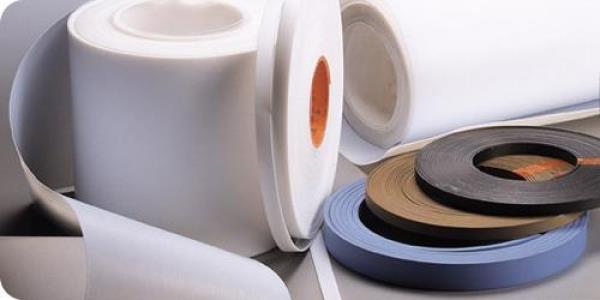Commercial fluoropolymers are based on TFE, VDF, and to a lesser extent CTFE. Examples of comonomers include PMVE, PEVE, PPVE, HFP, CTFE, and PFBE. The general consequences of substitution of fluorine for hydrogen in a polymer include increased chemical and solvent resistance, enhanced electrical properties such as lower dielectric constant, lower coefficient of friction, higher melting point, increased photostability and thermal stability, improved flame resistance, and weakened mechanical properties. The ultimate properties are achieved when a polymer is entirely fluorinated.

Fabrication Techniques
With the exception of two fluoropolymers, PVF and PTFE, the rest of the resins described in this chapter can be processed by standard melt-processing techniques such as injection, transfer and blow molding, extrusion and rotational molding. Process equipment for fluoropolymers must be made from corrosion-resistant alloys because of the corrosive compound that may be produced when fluoropolymers are heated above their melting points. Higher melt viscosity of these resins may require more powder and higher pressure rating equipment.
PTFE is processed using metal powder-processing techniques in which a preform is molded and “sintered.” Compression molding may also be used to fabricate PTFE parts. PTFE dispersions are applied by similar techniques to other coatings. Paste extrusion in which PTFE is blended with a hydrocarbon, prior to molding a preform, is used to continuously fabricate PTFE into tubes, tapes, and wire insulation. The hydrocarbon is vaporized before the part is sintered.
PVF is dispersed in a polar latent solvent such as dimethyl acetamide and is melt-extruded as a plastisol, followed by solvent removal by drying.
Applications
Properties of fluoropolymers that have led to applications include chemical resistance, thermal stability, cryogenic properties, low coefficient of friction, low surface energy, low dielectric constant, high volume and surface resistivity, and flame resistance. Fluoropolymers are used as liners (process surface) because of their resistance to chemical attack. They provide durable, low maintenance, and economical alternatives to exotic metals for use at high temperatures without introducing impurities. Electrical properties make fluoropolymers highly valuable in electronic and electrical applications as insulators, e.g., FEP in data communications.
In automotive and office equipment, mechanical properties of fluoropolymers are beneficial in low-friction bearings and seals that resist attack by hydrocarbons and other fluids. In food processing, the Food and Drug Administration approved fluoropolymer grades are fabrication material for equipment due to their resistance to oil and cleaning materials, and their anti-stick and low friction properties. In houseware, fluoropolymers are applied as nonstick coatings for cookware and appliance surfaces. Medical articles such as surgical patches and cardiovascular grafts rely on the longterm stability of fluoropolymers as well as their low surface energy and chemical resistance.
For airports, stadiums, and other structures, glass fiber fabric coated with PTFE is fabricated into roofing and enclosures. PTFE provides excellent resistance to weathering, including exposure to UV rays in sunlight, flame resistance for safety, and low surface energy for soil resistance, and easy cleaning.
Post time: May-30-2018

